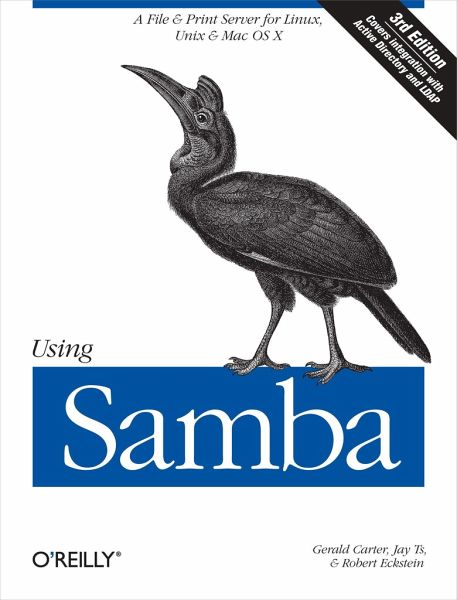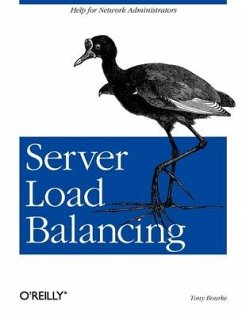Nicht lieferbar

Using Samba
A File & Print Server for Linux, UNIX & Mac OS X
Samba is a cross-platform triumph: it turns a Unix or Linux system into a file and print server for network clients using Microsoft Windows on the desktop. Available under the GNU General Public License, this open source software is so robust, flexible, fast, and secure that many administrators choose it over Windows for their file and print services.Our complete guide to Samba administration is intended for those of you who manage Unix and Linux and need to support Windows clients on your network, as well as anyone who needs to access the resources of a Windows network environment from a Unix client. Covering versions 2.0 and 3.0 of Samba, this new edition takes administrators from basic installation and configuration - on both the client and server side - to subtle details of security, cross-platform compatibility, and resource discovery. The book also includes added support for Active Directory and other LDAP databases such as OpenLDAP, SWAT, a complete rewrite of printer coverage, and much more. It's a one-stop-shop to setting up an efficient and secure Samba server.
This book is the comprehensive guide to Samba administration, officially adopted by the Samba Team. Wondering how to integrate Samba's authentication with that of a Windows domain? How to get Samba to serve Microsoft Dfs shares? How to share files on Mac OS X? These and a dozen other issues of interest to system administrators are covered. A whole chapter is dedicated to troubleshooting!
The range of this book knows few bounds. Using Samba takes you from basic installation and configuration -- on both the client and server side, for a wide range of systems -- to subtle details of security, cross-platform compatibility, and resource discovery that make the difference between whether users see the folder they expect or a cryptic error message.
The current edition covers such advanced 3.x features as:
Integration with Active Directory and OpenLDAP
Migrating from Windows NT 4.0 domains to Samba
Delegating administrative tasks to non-root users
Central printer management
Advanced file serving features, such as making use of Virtual File System (VFS) plugins.
Samba is a cross-platform triumph: robust, flexible and fast, it turns a Unix or Linux system into a file and print server for Microsoft Windows network clients. This book will help you make your file and print sharing as powerful and efficient as possible. The authors delve into the internals of the Windows activities and protocols to an unprecedented degree, explaining the strengths and weaknesses of each feature in Windows domains and in Samba itself.
Whether you're playing on your personal computer or an enterprise network, on one note or a full three-octave range, Using Samba will give you an efficient and secure server.
The range of this book knows few bounds. Using Samba takes you from basic installation and configuration -- on both the client and server side, for a wide range of systems -- to subtle details of security, cross-platform compatibility, and resource discovery that make the difference between whether users see the folder they expect or a cryptic error message.
The current edition covers such advanced 3.x features as:
Integration with Active Directory and OpenLDAP
Migrating from Windows NT 4.0 domains to Samba
Delegating administrative tasks to non-root users
Central printer management
Advanced file serving features, such as making use of Virtual File System (VFS) plugins.
Samba is a cross-platform triumph: robust, flexible and fast, it turns a Unix or Linux system into a file and print server for Microsoft Windows network clients. This book will help you make your file and print sharing as powerful and efficient as possible. The authors delve into the internals of the Windows activities and protocols to an unprecedented degree, explaining the strengths and weaknesses of each feature in Windows domains and in Samba itself.
Whether you're playing on your personal computer or an enterprise network, on one note or a full three-octave range, Using Samba will give you an efficient and secure server.








